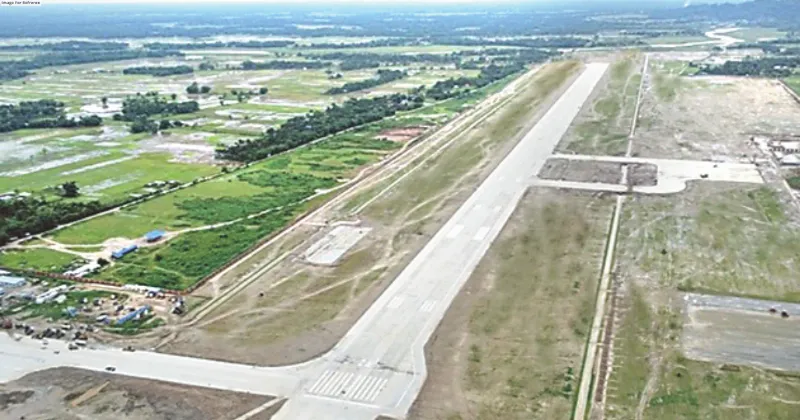Latest News
NaMo HARNESSING THE POWER OF PEOPLE

The narrators highlight that PM Narendra Modi treats people with respect and has the ability to connect with them, giving them the space to explain their goals. This quality is why they hold him in high regard for his humility. Furthermore, PM Modi’s inspirational speeches have played a significant role in shaping and guiding the direction of the states and lots more...
PM Modi and Ratan Tata – A memorable bond of vision - Late Ratan N Tata, Industrialist
The first meeting I had with Prime Minister Narendra Modi, we spoke from the same platform. It was an event of Gujarat industries. We were on the same wavelength almost instantly. I took an immense liking for what Mr Modi has achieved as chief minister of Gujarat, little knowing that a little while later he would be the prime minister of the country. He has been a friend ever since. I see Modi as being understanding and kind. He treats people with respect and he has the ability to get close to people, allow them to explain what they are trying to do, which is why I have a lot of praise for his humility and his being able to be with you anytime. He has the ability to put you at ease. I remember, I was in a meeting with the prime minister and other business leaders. He held that meeting for three hours. We haven’t seen a prime minister giving so much time to the business community. That was the kind of interaction we have had with Mr Modi. If there is anything, taking it up with Mr Modi, either as chief minister or as prime minister, if he said it would be done, it was done. It hardly ever happens that way while dealing with governments. Moving the Tata Motors car plant from West Bengal to Gujarat and Mr Modi mentioned publicly to me that ‘I will get you the land in X number of days,’ and exactly at that time he delivered the papers of the land to us. We immediately moved to Gujarat in a smooth process. Soon several other car companies also made their investment in the state. Gujarat has subsequently become a vibrant centre for automobile industry. If he got involved with something, be it the goal that he wanted to be established or any development he wanted done, he would make the time and effort to make sure that it took place. From the government side the business community would get all the assistance and goal setting that he wanted. For example, the Tatas were setting up a cancer care facility in India with the Atomic Energy Commission. We were going to set up many cancer specialty hospitals to treat cancer patients. Mr Modi wanted to visit these hospitals that were coming up and he gave a lot of time and effort in endorsing them, especially those in hard to reach places to make India a leader in such moves and I found that very creditable. Vibrant Gujarat was his show and treated it like he was steering the country in a particular direction. I had said in my address on why we should invest in Gujarat, that if we were asked why we did not invest in Gujarat, we would have only one answer and that was, ‘because we were stupid not to’, as it makes sense for everybody to invest in the state. The potential is enormous. On Mr Modi’s insight on what we would achieve, I think what he has achieved is phenomenal and we are all proud of what India is doing. We hold a view that this is a new India that has emerged. So, I am exceedingly grateful and enthusiastic about where we are standing today.
When Modi ji weaved Mahatma Gandhi’s mission with his Swacchata campaign - Parameswaran Iyer, Retd IAS, Executive Director, World Bank Group
The year was 2018 and we were in the thick of the Swachh Bharat Mission programme and Prime Minister Narendra Modi was leading the effort. We were looking at the progress different states had made in the cleanliness mission to reach their respective goals. Some states had advanced more rapidly towards their sanitation goals while some others were lagging behind. The PM was always at the forefront, taking frequent review meetings to track the progress and he often gave us very concrete and novel suggestions on how to take it forward for the success of the movement. The April of 2018 also marked the 100th anniversary of Mahatma Gandhi’s Champaran indigo movement and one of the most remarkable ideas of PM Modi was to link the Swachhata movement with Gandhi ji, who, we all know, was highly focused on sanitation. Modi ji coined the term ‘Swachhagrahis’ or village motivators, who would motivate communities for making their villages ODF (open defecation free), and asked us to raise 20,000 of those volunteers to carry forward the mission. The term ‘Swachhagarhi’ resonated with Gandhi ji’s ‘Satyagrahi’ and this was a very sagacious linking of the two to connect the cleanliness mission with the spirit of Gandhi ji for greater participation and enthusiasm. Modi ji’s idea was to bring 10,000 sanitation workers and ‘Swachhagrahis’ from across India meet 10,000 such volunteers from Bihar and share their experiences from other parts of the country, stay with them for a week and travel across Bihar to see how sanitation standards could be improved. The PM himself went down to Motihari (Bihar) and addressed a huge gathering of ‘Swachhagrahis’ who had assembled from across the country, motivating them to go around, look beyond Bihar and address community issues to ensure their villages adopted the right practices and reached ODF status fast. It was an inspirational speech which exhorted the volunteers to turn the campaign into a ‘jan andolan’ (mass movement) and I remember how galvanised and motivated they became. This made a lot of difference in shaping and giving direction to the movement, not only in Bihar but in other states too.
COMPILED AND EDITED BY SHASHIKANT SHARMA





















